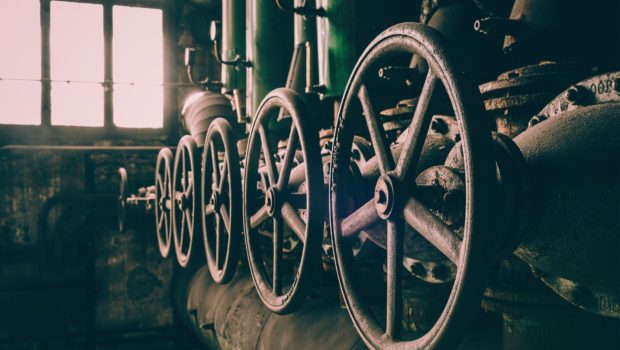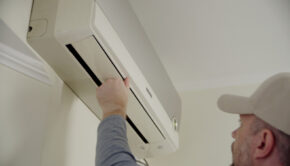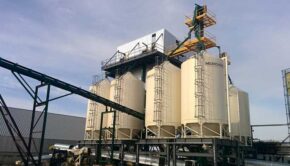Pressurized Systems – The Different Types and Uses
With a rise in industrialization around the globe and countries relying on it for development, rejuvenation and economic growth, the industries prioritize installing state of the art, flawless and efficient pressure systems.
Pressure systems are comprised of the pressure vessel; a container that holds liquid, vapors or gases at a pressure substantially higher than the ambient pressure.
Pressure systems have found significant applications in a wide range of industries.
Industries that make use of pressure systems:
- Aerospace, Aviation and Defense
- Chemical processing
- Electronic industries
- Gas and Liquid handling systems
- HVAC
- Petrochemical
- Pharmaceutical and Biotechnology
- Power generation and distribution
- Transportation
Pressure vessels operate like a heart of the system, one little flaw and everything is compromised. The extent of fatalities can range from minor to catastrophic. Each vessel is specially designed catering to the pressure and temperature of the system it has to work under. Deviation from its operating limits can result in catastrophic failure, over-pressurization, poisonous leaks and even explosions. Hence, it goes without saying, the safety of the pressure system is of utmost importance to work under optimal conditions.
Among others, rupture disc, also widely known as burst disc is a key component in ensuring the safety of the systems working under extreme pressures and temperature.
So what is a Rupture disc?
Rupture disc, also sometimes called, burst diaphragm is a non-reclosing, sensitive relief device primarily designed to prevent over-pressurization by bursting when the pressure becomes intolerable to hold and allow the excessive pressure to vent out without causing damage to essential equipment.
It is a lean, metallic circular disc that fits firmly in a disk holder and releases superfluous pressure by bursting open at a pre-established pressure and temperature.
Bursting discs can be used as a primary relief in some systems, while in most it is used in combination with relief valves as a secondary relief to safeguard the protection of both personnel and equipment. It has an extremely short opening time (one half of one millisecond (0.0005 sec.) to shift from a sealed system to an open system and therefore functions optimally as a “quick opening” valve.
There is a functional similarity of the disc with safety valves.
The primary discrimination is the facts that once open being subjected to differential pressure, the burst discs cannot be reclosed and hence reused. Therefore a replacement becomes essential.
Types of Disc Technologies
All rupture discs usually employ two types of technologies, with a contrasting difference in operational design. These are forward-acting (tension loaded) and reverse buckling (compression)
Forward Acting
Forward acting discs have a concave side. When excessive pressure is exerted, it stretches the dome, compromising the tensile strength of the material resulting in a disc burst.
The burst pressure is determined on the basis of the material’s thickness and the diameter of the disc. Use of the latest technology in its manufacturing has improved its efficiency to a great extent, however, occasionally the operating conditions and pressure cycling can result in disc bursting at a pressure lower than its predetermined value.
Reverse Buckling
Reverse buckling rupture discs work in an exact opposite fashion. The dome is inverted, and the pressure is applied on the convex side instead. Exceeding pressure will cause the dome to change its direction. With the dome now on the opposite side, metal blades, located along the scoreline will cut open the disc and release the pressure.
Correct installation of the reverse buckling disc is imperative for its correct and efficient functioning. If installed incorrectly, it will act as a forward acting disc and owing to the thickness of the material, will burst at a much higher pressure than expected.
HPX rupture disc family is one of the best, most efficient, reliable and cost-effective reverse acting rupture disc lines available in the market, fit for all kinds of industries and processes with the slightest chance of overpressure accidents.
Burst Disc Indicators
As quite evident from the name itself, burst disc indicator is an alarm system that notifies the system operator when the rupture disc bursts to vent out over-pressure or vacuum conditions. It is designed to be used with Continental disc products to give a timely and reliable indication of split discs. Many top-notch burst disc indicator manufacturing companies have excelled in ensuring personnel safety, reduced response time and elevated profit margins by developing ultra-modern rupture disc indicator alarm systems.
How they work
Burst disc indicator is a construction of three main components which together function efficiently to notify a burst and protect workforce, machinery and the environment. These are:
1. Burst Disc Indicator Alarm System
This consists of a sensor joined up with rupture disc alignment to initiate an alarm when the disc bursts. This system can be employed across a range of industries to certify prompt notification of such events.
2. BDI-FLX Burst Disc Sensor System
This network of wires and sensors connects the alarm system with MTB-700 alarm monitor and functions as a messenger. Its sensor strip is employed with a potentiometer to immediately point out a rupture disc.
3. MTB-700 Alarm Monitor
The main purpose of this two to four-channel monitoring instrument is to signal the operator in the control room as well as to activate the connected valves and pumps of the system.
Conclusion
Pressure protection applications, with rupture disc technology being the most notable, make certain that all industries that employ pressurized systems run safely and efficiently, cutting the loss of both man and machinery and are timely warned of the explosions and accidents resulting from excessive pressure.
Burst disc together with burst disc indicator is an amalgamation of a cost-effective solution with cutting-edge technology is the best stand against industrial incidents. These are widely used in an extensive range of industries and are listed in global pressure equipment design codes (ASME, PED, etc.)
So here’s a bunch of information that you needed to know about pressurized systems. If you have any further queries, feel free to leave them in the feedback and we’ll be sure to get back to you as soon as possible.
Cover Credits
Image by Peter H from Pixabay







![Why The Bitcoin Bubble is Not Likely To Pop Anytime Soon [Infographic]](https://technofaq.org/wp-content/uploads/2018/01/bitcoin-fact-150x150.png)

![Effective Tips to Get the Best Studio Headphones [Infographic]](https://technofaq.org/wp-content/uploads/2017/02/Effective-Tips-to-Get-The-Best-Studio-Headphones-150x150.jpg)






